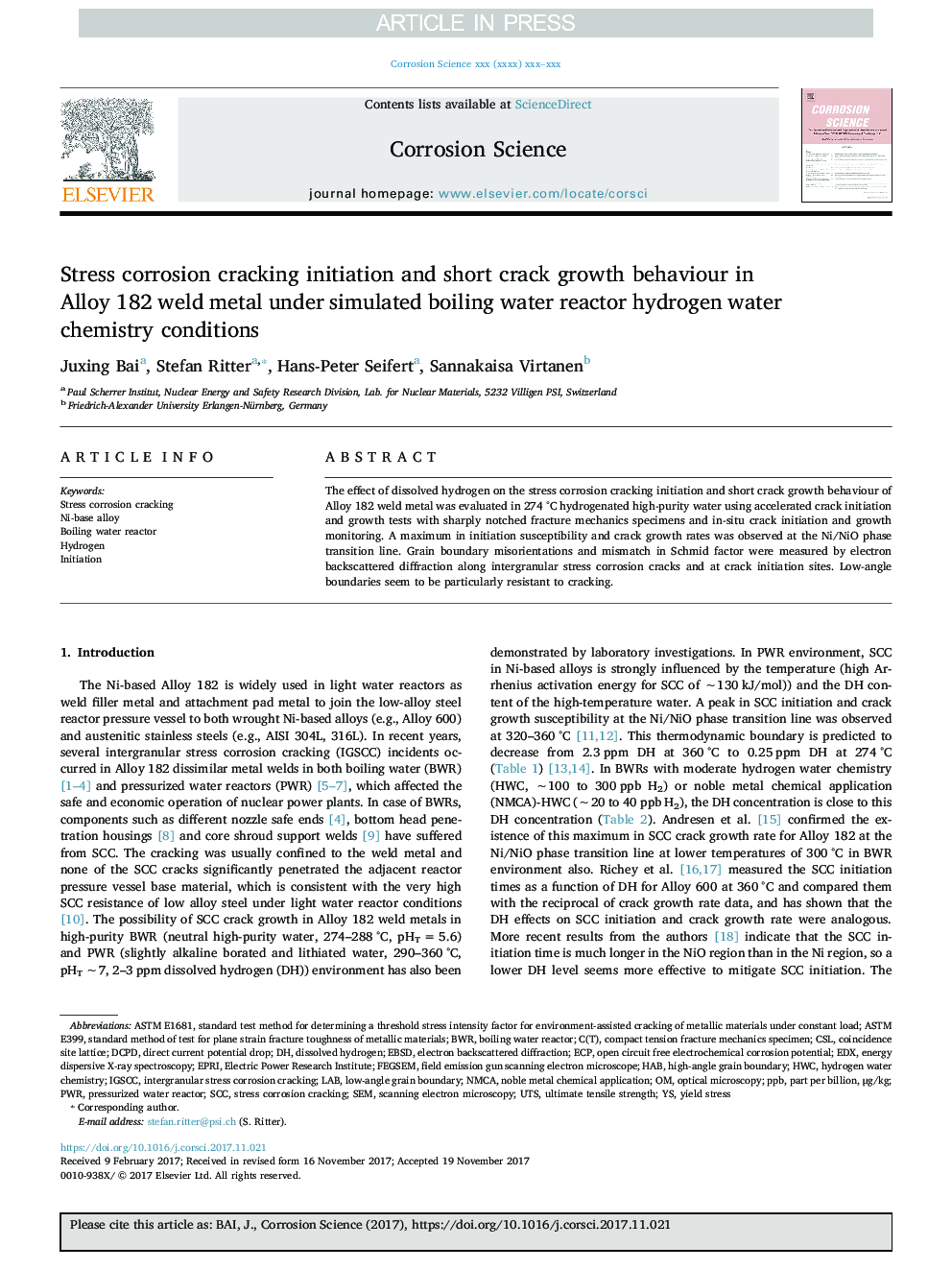| Article ID | Journal | Published Year | Pages | File Type |
|---|---|---|---|---|
| 7894017 | Corrosion Science | 2018 | 15 Pages |
Abstract
The effect of dissolved hydrogen on the stress corrosion cracking initiation and short crack growth behaviour of Alloy 182 weld metal was evaluated in 274 °C hydrogenated high-purity water using accelerated crack initiation and growth tests with sharply notched fracture mechanics specimens and in-situ crack initiation and growth monitoring. A maximum in initiation susceptibility and crack growth rates was observed at the Ni/NiO phase transition line. Grain boundary misorientations and mismatch in Schmid factor were measured by electron backscattered diffraction along intergranular stress corrosion cracks and at crack initiation sites. Low-angle boundaries seem to be particularly resistant to cracking.
Keywords
FEGSEMDirect current potential dropHigh-angle grain boundaryIGSCCHydrogen water chemistryHWCCSLBWRC(t)ECPppbEBSDDCPDHABEPRIEDXLABEnergy Dispersive X-ray SpectroscopyIntergranular stress corrosion crackingBoiling water reactorCoincidence site latticeLow-angle grain boundaryElectric Power Research InstituteOptical microscopyDissolved hydrogenElectron backscattered diffraction
Related Topics
Physical Sciences and Engineering
Materials Science
Ceramics and Composites
Authors
Juxing Bai, Stefan Ritter, Hans-Peter Seifert, Sannakaisa Virtanen,
